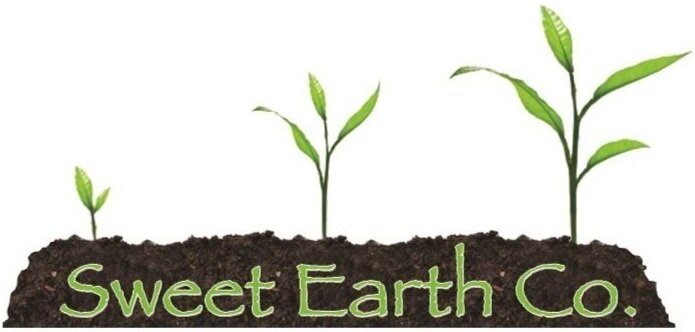Navigating the Peat Moss Debate: Sustainable Gardening Choices
As conscientious stewards of the earth, it's incumbent upon us to scrutinize the practices we employ in our gardens, particularly when it comes to materials like peat moss. The use of peat moss in gardening and horticulture has sparked a heated debate among enthusiasts and professionals alike, rooted in its environmental impact and sustainability. To delve into this debate, let's explore the pros and cons of peat moss, the opposing viewpoints, and alternative practices aligned with the ethos of "if you know better, you do better."
Understanding Peat Moss:
Pros:
1. Excellent Moisture Retention: Peat moss possesses superb water-holding capacity, making it an ideal medium for starting seeds and cultivating delicate plants.
2. Acidic pH: It aids in creating acidic conditions, which are favorable for certain acid-loving plants like blueberries and azaleas.
3. Lightweight and Fluffy Texture: Its light, airy structure promotes healthy root development and ensures good aeration in soil mixes.
Cons:
1. Environmental Impact: Peat moss is harvested from peat bogs, which are vital ecosystems serving as carbon sinks and habitats for unique flora and fauna. Extraction can lead to habitat destruction, release of stored carbon, and loss of biodiversity.
- Peat bogs store an estimated 550 gigatons of carbon globally, more than the amount stored in all forests worldwide. [1]
- The harvesting of peat moss releases approximately 0.6 to 1.4 kilograms of carbon dioxide per kilogram of peat extracted. [2]
2. Slow Regeneration: Peat bogs regenerate at an extremely slow rate, with estimates ranging from hundreds to thousands of years. Harvesting peat moss at unsustainable rates depletes this non-renewable resource.
- Peat bogs can take up to 1,000 years to regenerate just one meter of peat. [3]
Polarized Camps
For Peat Moss:
Proponents argue for its unparalleled performance as a growing medium, citing its unique properties and widespread availability. They may point to responsible harvesting practices and certifications like the "Responsible Peatland Management" label.
Against Peat Moss:
Opponents emphasize the irreplaceable value of peat bogs as critical ecosystems and advocate for alternatives that mitigate environmental harm. They highlight the urgency of transitioning to more sustainable practices to preserve these vital habitats.
Alternatives to Peat Moss:
1. Coconut Coir: Derived from coconut husks, coir is a renewable and sustainable alternative with similar water retention properties to peat moss.
2. Compost: Homemade or commercially available compost enriches soil with organic matter, improving its structure and fertility.
3. Leaf Mold: Decomposed leaves create a nutrient-rich mulch that enhances soil health and promotes microbial activity.
4. Green Waste Compost: Municipal green waste compost is produced from recycled yard trimmings and is an eco-friendly option for enriching soil.
Each alternative offers unique advantages and considerations as seed-starting mediums. By carefully evaluating the pros and cons of each option based on factors such as effectiveness, availability, and cost, gardeners can select the most suitable alternative for their seed-starting needs while promoting sustainability in their gardening practices.
Where Do We Stand?
While we have used peat moss in our farming practice to start our seeds and store dahlia tubers, now that we understand some of its negatives, we will be using compost to start our seeds for a couple of reasons:
We have lots of it readily available.
Many of the seeds we direct seed into garden beds are sown into beds that have a layer of compost, so we think that using compost in our seed trays will also be successful.
We will be sure to report back on this. As for storing our dahlias in peat moss, well, we re-use that peat moss year after year. It doesn’t make sense to just throw it away. We will continue to reuse it, but we won’t buy more. We will explore other more sustainable ways to store our dahlia tubers and transition when we have found an alternative solution.
If You Know Better, You Do Better
The controversy surrounding peat moss underscores the importance of informed decision-making in sustainable gardening practices. By weighing the pros and cons, considering opposing viewpoints, and exploring alternatives, we empower ourselves to make choices aligned with the ethos of "if you know better, you do better." Let's cultivate not only beautiful gardens but also a healthier planet for future generations.
Sources and References:
1. Holden, J., Chapman, P.J., Labadz, J.C. "Artificial drainage of peatlands: Hydrological and hydrochemical process and wetland restoration." Progress in Physical Geography: Earth and Environment, vol. 30, no. 1, 2006, pp. 50-69.
2. Joosten, H., Clarke, D. "Peatlands and Climate Change." International Peat Society, 2002.
3. Limpens, J., Berendse, F., Blodau, C., et al. "Peatlands and the carbon cycle: from local processes to global implications – a synthesis." Biogeosciences, vol. 5, no. 5, 2008, pp. 1475-1491.
No matter how small your outdoor space, you can do your part to support and improve biodiversity, the ecological environment and the overall climate. Every Little Bit Helps.
So, are you feeling excited to create the most eco-friendly garden possible? Download our FREE Climate-Friendly Garden Audit to see how your garden stacks up against even the most eco-friendly landscapes. You’ll walk away with an action plan for improvement.


